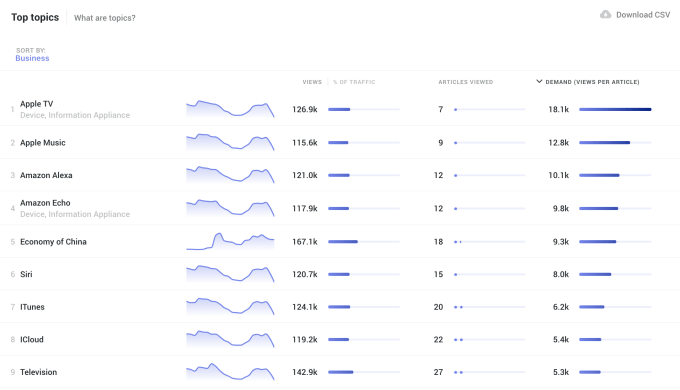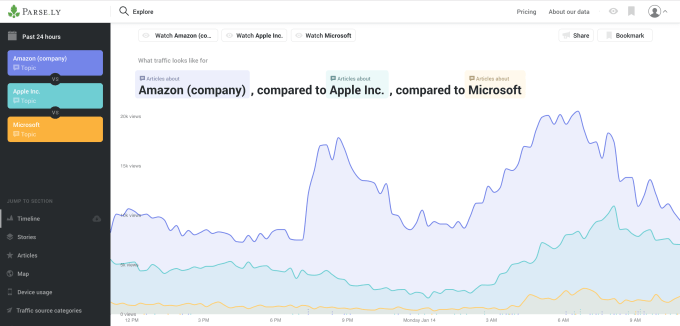Hugh Harsono is a former financial analyst currently serving as a U.S. Army officer.
More posts by this contributor
China’s fast-paced growth has resulted in it being one of the most extremely flexible nations in terms of technological integration into existing infrastructure. With its relatively newer institutions and organizations, China can easily adapt existing infrastructure around current and potentially future technologies. Because of the rise of automated vehicles and their specific criteria, many have wondered how to properly establish specific infrastructure to support such technology. This is where China has an opportunity to thrive: Its more robust mechanisms for change have the capability to implement such technology on a large-scale, enabling smart highway and roads as the baseline for future infrastructure projects worldwide.
What is a smart highway, and why do we need them?
There are many definitions for the term “smart highway,” but the general consensus is that this type of roadway will allow for technological integration into current transportation roadways, including, but not limited to, functions such as generating power through solar panels, integration with self-driving cars and sensors and structural maintenance monitoring systems. Smart highways have the opportunity to turn from serving a singular purpose in being the backbone of various countries’ transportation systems to providing additional value added through the generation of power, safety feature implementation and the gathering of key data points for both drivers and transportation administrators.
In the wake of incidents such as the death of a driver in a Tesla on Autopilot mode, as well as the death of a pedestrian during an Uber self-driving pilot program, smart highways would allow for improved safety mechanisms. Automated vehicles, smart highway sensors and software programs would have increased capability to identify and stop incidents as they occur, allowing real-time feedback to enable safety features to prevent, or at least mitigate, any injury or harm to drivers. Instead of simple commands issued to the driver, which are still prone to human error, a smart highway would enable smart vehicles to work with sensors and other roadside-integrated technologies to create tools such as full-stop fail-safes in the event of an incapacitated driver.
The rise of automated vehicles throughout the world has also given rise to the idea of smart highways.
Additionally, world power consumption is on the rise, with energy demand being projected to increase by more than 25 percent by 2040. On the same note, fossil fuel consumption will also decrease, increasing the need for sources of renewable energy. Smart highways will be able to ensure full utilization of the millions of miles of roadways across the globe, dual-utilizing these vast spaces to produce energy to power not only highway-specific infrastructure, but also potentially nearby areas, such as towns, cities and even power plants. Smart highways represent an opportunity for sustainable energy growth, allowing power generation for key infrastructure, as well as potentially even charging electric vehicles as they drive.
Data aggregates collected from smart highways would also be very useful in urban planning, allowing for increased travel efficiency as well as decreased environmental pollution from vehicles. One potential example of smart highways utilized to produce results would be engineers utilizing real-time data to analyze traffic flow in a specific area in relation to lane mergers and freeway exits, optimizing roadways to ensure the least amount of time a car is stopped at any specific traffic choke point.
With the advent of automated vehicles and other smart technologies, smart highways are simply necessitated to ensure the full integration and use of such innovation. These potentially life-saving tools can be utilized to increase driver and pedestrian safety, increase clean energy consumption and promote sustainability — and even help engineers with urban, road and traffic planning.
Are there any projects that are close to being implemented for smart highways?
There have been many attempts to create parts of smart highways, with specific efforts focusing on solar roads and smart traffic infrastructure projects. However, many of these efforts have been met with mixed results, running into a variety of issues that include, but are not limited to, true power efficiency and monetary cost.
In October 2014, the Netherlands established the SolaRoad pilot project, creating a 70-meter stretch of bike path. This project was met with resounding success, producing nearly 10,000 kWh in its first year. More projects are being developed off this specific one, moving to more heavy traffic areas for testing in 2019. However, this project is specifically focused on developing solar roads, and not fully integrated solar highways, in order to increase renewable energy consumption in the area.
In September 2016, Idaho-based Solar Roadways built a nearly 14-square meter roadway in Sandypoint, Idaho. However, Solar Roadways’ own report to the U.S. Department of Transportation noted how its panels “used about one-third of the electricity they generate to power their built-in LEDs,” drastically affecting efficiency of energy created, generating a mere 52.39 kWhs in six months. This has affected other solar roadway development in the United States, halting a planned 2017 Missouri solar road project near Conway, due to what Solar Roadways calls “a variety of complex red tape factors.” This project has been a cause of concern for many because of its high costs and relatively low efficiency factors in terms of energy production.
December 2016 saw what began as a Wattway, Hannah Solar and Georgia Department of Transportation-sponsored 50-square meter roadway evolving into The Ray. At nearly 30 kilometers on I-85 in Troup County, Georgia, The Ray has become one of the most comprehensive smart highways today, encompassing a solar-powered vehicle charging station, tire-safety check station and the aforementioned solar road.
Also, in December 2016, France opened a roughly 1 km solar road in partnership with French company Colas. Unfortunately, this road has not lived up to expectations, generating only 409 kWh of energy per day as opposed to an original estimate of 17,963 kWh per day, costing the French government millions of Euros to install and maintain, with 5 percent of the solar panels already requiring replacement.
As one can see, portions of smart highways have been met with limited success throughout the world. Cost, bureaucratic interference, true energy output and sustainability are just some of the many concerns that can potentially drive or tank such projects.
Why China: infrastructure expertise, quick implementation and robust manufacturing capabilities
China’s unique nature as a rising nation seeking status as a developed one gives it immense opportunity to implement smart technologies. With a mobile-first mindset helping to carry internet to hundreds of millions of people without desktop computers, China has shown the capability to implement technology quickly and relatively efficiently. Therefore, China is the most likely place for the world’s first true smart roadways because of its unique infrastructure environment, relatively flexible bureaucracy in terms of technological implementation, as well as the robust nature of manufacturing and supply chain refinement in China.
Opening in December 2017, the largest stretch of solar road currently lies in eastern China’s Shandong province, created by Pavenergy and Qilu Transportation, with an area of 5,875 square meters. In this specific instance, China’s more rigid concrete-based roads allow for a better placement of thin solar cells, as opposed to the asphalt-based American highway system. This unique infrastructure environment allows for the easier implementation of solar technologies on such concrete-based roads.
Additionally, the Chinese are well-versed and experienced in traditional road construction, building China’s expansive expressways, as well as a lot of road infrastructure in Latin America and Africa. This is only added on to by China’s reputation as a very expeditious infrastructure builder, with Chinese companies setting records, such as building a 57-story skyscraper in 19 days and a railway station in just 9 hours. These unique infrastructure traits make China the perfect ground to build the world’s first true super highway.
China’s manufacturing might is also a key indicator of success in terms of implementation of a smart highway.
China’s relatively flexible bureaucracy, specific to technological implementation and innovation, also helps in supporting the argument of the world’s first superhighway being in China. With China clearly dominating the mobile-first environment — with 1.1 billion mobile internet subscriptions in 2017 (nearly twice the amount of the U.S. at the time) — Chinese consumers actually purchase more through mobile phones than computers, with the Chinese government playing an active role to establish infrastructure to support mobile-first technologies.
In the case of drones, China’s Civil Aviation Authority released a clear set of federal guidelines and regulations governing their use in 2016. In contrast, many Western nations have very mixed rules when it comes to drone use, with federal, state, county and municipal agencies often implementing confusing and sometimes even contrasting rules. These two examples showcase how China is very quick to implement technology throughout its country, and how its government is very forward-leaning and early adopting in this specific respect.
China’s manufacturing might is also a key indicator of success in terms of implementation of a smart highway. China’s very strong manufacturing power has catapulted it into success, from constructing simple consumer goods, to being the premier assembler of iPhones, and now to the development of very inexpensive and efficient solar panels. China has refined its supply chain process immensely well, to the point where Chinese factories are optimized from start to finish, from having the initial components of specific products mere kilometers from one another, to having the ability to ship millions of packages every day. This overwhelming efficiency has led to a key component of smart roadways being China’s premier business, with China becoming the manufacturer for roughly 70 percent of all solar panels today.
Additionally, China leads the world in solar power production, installing 34.5 gigawatts of new solar energy capacity in the first nine months of 2018 alone, while consisting of 53 percent of all solar installations in 2017 and more than 50 percent of all global installations in 2016. This heavy industrial development of solar panels within China is a huge benefit for Chinese solar roadways, allowing localized firms to quickly manufacture and implement solar roadways, and, to a further extent, smart highways. With an unrivaled manufacturing capacity and a very well-developed supply chain, China represents the most likely place for the world’s first true smart highway.
All in all, China is not only the most likely place, but the premier environment, for the world’s first smart roadway because of its unique infrastructure environment, fast-paced technology implementation standards and dominance in global manufacturing and supply chain.
Conclusion
The rise of automated vehicles throughout the world has also given rise to the idea of smart highways, encompassing all sorts of technologies such as sensors, solar panels and software to create a safer and more efficient driving environment. While nations such as Dubai have announced plans to develop and integrate existing smart technologies into their traffic systems, China is one of the first, if not the first, to announce plans to build a projected 161 kilometer-long smart road in its eastern Zhejiang province, integrating safety features to support autonomous driving tracked with sensors, an Internet-of-Vehicles system and solar panels.
Chinese scientists also continue to innovate in the solar sector, a key component of smart highways, achieving a record 17.3 percent power conversion efficiency rate on organic solar cells. Therefore, we can only conclude that the world’s first true smart highway will be in China, leading the way to fully integrate smart technology with current traffic infrastructure.





